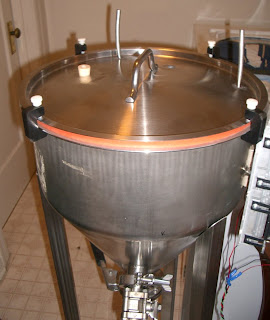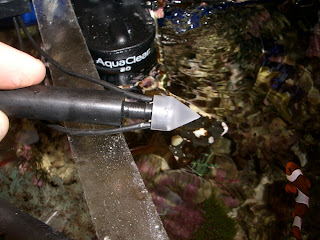This project all started with my plan to abandon music CDs and use my G1 phone to carry all of my music. Here's how my ideal situation would work: When I get in my car, I would like to press a button and hear a series of random songs from my music collection that is stored on my computer. Note that I didn't say anything about connecting wires, syncing, downloading, looking through settings or album lists, etc. In the ideal plan, the music would all be handled seamlessly without any thought on my mind except "play".
By the way, I have been using MediaMonkey to handle my music, and I really like it:
http://www.mediamonkey.comThe G1 is a very flexible device, so I figured this would be no problem. However, there are problems. First, the audio quality coming out of the usb->headphone jack adapter on the G1 is truly dreadful. I am not being a stuck-up about this. I mean it's just plain bad. The sound has no bass (it seems anything below 150Hz is completely gone). There are a lot of compression artifacts evident in cymbal sounds, and the high-mids are unusually harsh-sounding. Finally, the overall amount of signal coming out of the headphone jack is very low. Before anyone accuses me of using low-quality MP3, let me say that I made these MP3 myself from CDs and used 320kbit for some test files. They are good MP3 and sound perfectly fine on normal sound systems.
So, connecting the G1 to my car's sound system via a headphone jack, while slightly inconvenient may not work at all because of the low quality. This prompted me to wonder if the Android software had any control over the sound output. As a matter of fact. It does, and it's possible the designers purposefully cut everything below 150Hz for use with speech-only audio.
http://forum.xda-developers.com/showthread.php?t=517745&page=120Ah, nothing like a 120-page thread. I'm sure it will only take a few hours to read it.
Anyway, the short story is that a developer named meltus has found three audio files in the system/etc directory of the android operating system that have some effect on the sound processing. I was intrigued and wanted to edit the files myself to see how much of the audio quality was dependent upon software. Unfortunately, the android system will not allow anyone to edit system files (even me, the owner of the damn phone). I instantly decided to "root" the phone so that I could investigate the full potential of the device.
Gaining root access is possible on the G1 by a few different ways, but the information available on the web is sketchy. There are only two groups of people who root their phones: 1. Serious developers who are so into Android, that they don't have time to explain the process to newbies 2. Newbies who want root access but don't know what it is. There is a major echo chamber on the web just filled with mindless stupid comments from people hacking away at their phones. I am not against hacking, I am only against repeating misinformation in forums and wasting bandwidth by repeating hearsay over and over again.
Anyway, I followed Cyanogen's instructions, and didn't have any problems at all:
http://wiki.cyanogenmod.com/index.php/Full_Update_Guide_-_G1/Dream_Firmware_to_CyanogenModThis guy deserves major props for writing a clear, concise set of directions.
The process of downgrading to RC29 is not that hard, and the whole process took less than an hour.

So, here it is, and I know have complete control of my own phone.
The next steps will be to see how much better the audio quality can be made, testing bluetooth high-quality audio, syncing MP3 over Wifi, installing a bluetooth receiver in the car, etc.
 I also welded my stainless cooling coil into the lid.
I also welded my stainless cooling coil into the lid. I made some Delrin clamps to keep the lid held tightly onto the tank. The silicone rubber is very soft which helps easily make a seal with minimal clamping pressure. I clamped it all up, shut both valves, and sucked some air out with my lungs. I could feel the vessel holding the vacuum that I created, so I assume the setup is essentially air-tight.
I made some Delrin clamps to keep the lid held tightly onto the tank. The silicone rubber is very soft which helps easily make a seal with minimal clamping pressure. I clamped it all up, shut both valves, and sucked some air out with my lungs. I could feel the vessel holding the vacuum that I created, so I assume the setup is essentially air-tight.













